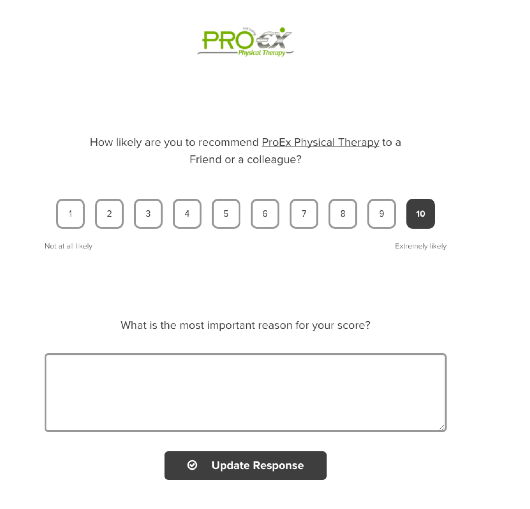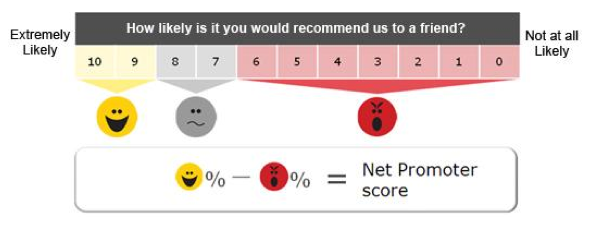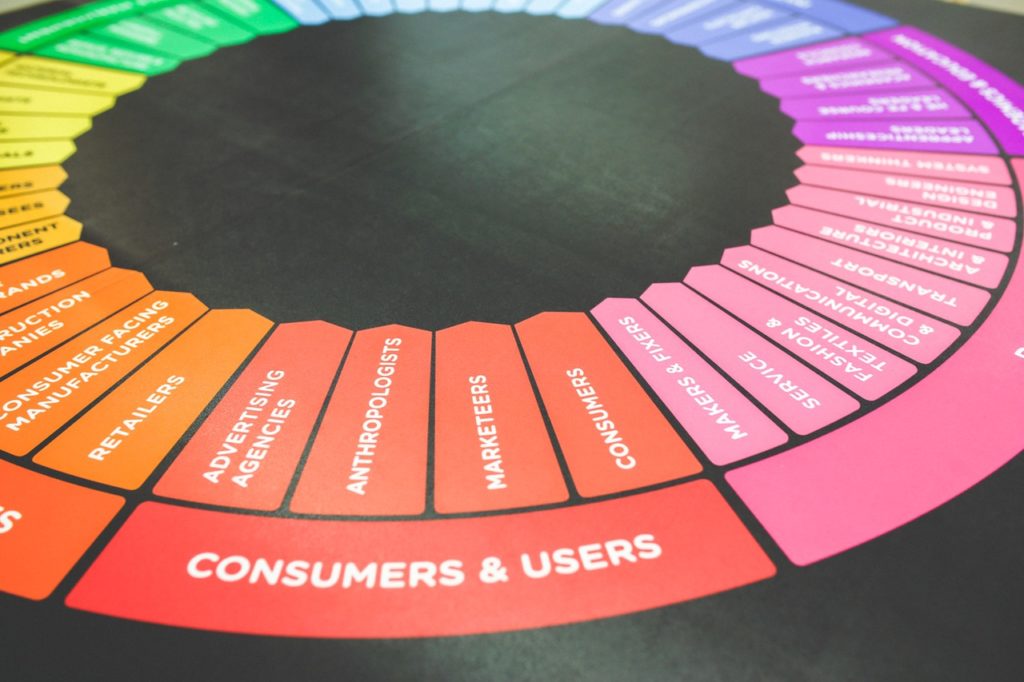By Ann Wendel | Strive Labs
Imagine having the ability to identify unhappy customers at their third visit in order to perform a customer service rescue to create a satisfied lifelong client. Or to have the ability to identify your biggest fans at discharge in order to ask them to tell their friends and family about your services. This isn’t a dream – a tool exists that can help you create and retain loyal customers. This tool is the Net Promoter® Score (NPS®).
The Net Promoter® Score was developed by Bain and Company in 2003 to help businesses measure and monitor customer loyalty. This tool is so powerful, in fact, that the Harvard Business Review has dubbed it The One Number You Need to Grow.
The NPS® is more than a survey, and it’s more than a metric; it’s a way of doing business. Monitoring, understanding and acting upon the NPS® forces companies to focus on delighting their customers. And in that process, it can drive growth, as NPS® companies see:
- Increases in their number of word-of-mouth referrals
- Increases in their customer retention rate (decreased early patient dropout)
- Increases in customer reactivation rate (getting past patients to come back)
- Implementation of data-driven process changes across their organizations to improve the customer experience and systematically build patient loyalty
- Utilization of NPS® data to increase Search Engine Optimization (SEO) so that it is easier for potential customers to find them online.
And the best thing about the NPS® is that it’s simple to deploy, analyze and act upon.
What Does the NPS® Look Like?
The NPS® itself is a quick, one question survey that asks your customers:
How likely is it that you would recommend [Blank Physical Therapy] to a friend or colleague?
Best practice for NPS® collection also calls for optional open-ended feedback asking “What is the most important reason for your score?”
See below for an example of what an NPS® survey should look like at your clinic:

What Does It All Mean?
Depending on their score on the NPS®, customers can fall into 3 categories:
- Promoters: Responders who score a 9 or 10. These are your loyal customers– the lifeblood of any business.
- Passives: Responders who score a 7 or 8. These people are passively satisfied with your services. While you may think satisfied customers are a good thing, this group isn’t brand loyal: they’d be quick to try out a competitor’s services next time around.
- Detractors: Responders who score a 6 or lower. For these customers, a fundamental failure in service delivery occurred. These people, aside from being angry, are the most likely culprits for negative word-of-mouth comments that hurt your business.
To calculate your company’s NPS® you need to keep track of the percentage of your patients that are promoters, passives and detractors.
The calculation itself is simple:
- NPS® Score = (% Promoters) – (% Detractors)
As an example, if 70% of your customers are promoters, 10% are passive, and 20% are detractors, your NPS® is 50.
For a nice visual, check out the image below (originally found here):

Aside from keeping track of your NPS®, you also should have a large amount of qualitative feedback from the “What is the most important reason for your score?” section.
What’s a Good NPS® Score?
NPS® scores vary by business sector. Here’s are a few excellent resources on NPS® benchmarks across industries.
At Strive Labs, we’re working to benchmark NPS® for Physical Therapy in order to help you create and retain loyal customers for your practice. The good news is, our industry has a higher average than other industries. Here’s what we’ve found so far in our quest:
* If your NPS® score is in the 50’s, you are in the bottom 10%.
* If you are in the high 70’s, you are about average.
* If you’re in the high 80’s, you are in the top 10%.
Now, this comes with a caveat: our data only includes the companies that are using our software. Meaning, the number may be skewed higher, as there could be a selection bias where the companies using our software already have a keen eye on the customer experience. In the digital age, where positive and negative reviews can be left online in real time for all to see, we believe it is vital for practice owners to care about not only customer satisfaction, but also customer loyalty – and the NPS® is the best way to measure loyalty.
How Can I Deploy the NPS®?
Now that you understand what the NPS® is, as well the benefit it can have on your businesses’ bottom line, let’s talk about how you can deploy the NPS® at your organization
1. Deliver the NPS® at Key Points in Care
By analyzing the NPS® data we’ve collected at Strive Labs, we’ve found that detractors are more likely to drop out of care than their promoter counterparts. This is also supported by data collected by Bain & Company, who state that [detractors are more likely to defect than promoters] (http://www.netpromotersystem.com/system-processes/loyalty-economics.aspx).
We also know that a large cohort of patients (about 20%) drop out of PT within the first 3 visits. This high customer drop out, or patient churn, can cripple your bottom line. The good news is, it can be managed by finding your detractors early and intervening appropriately.
If 20% of customers are dropping out in the first few visits, it makes the most sense to send the NPS® within the first week of a patient starting care with you. You can have the patient complete the NPS® in clinic, or send it via email with tools like Survey Monkey or StriveHub.
From there, have a plan in place to intervene when a low score comes across your desk. If you can set the wheels in motion early, you have the opportunity to improve the customer experience and decrease that patient’s likelihood of dropping out of care, as well as the possibility of creating a loyal customer through service recovery efforts.
You can also follow-up by sending another NPS® at the date of discharge, and compare your scores at these two touch points.
2. Keep Track of Your Promoters
Your promoters are the key to driving growth at your organization. Here’s what we know about the power of promoters:
- Promoters account for 80-90 percent of a company’s word-of-mouth referrals.
- Promoters require lower sales, marketing, and advertising costs than other customers.
- Promoters are less price-sensitive than other customers (in the age of deductibles, this is an important statistic to be aware of).
- Promoters have a substantially greater Lifetime Value than other customers. Meaning, they buy more in each transaction, and they come back more often.
- Promoters are more interested in new offerings and brand extensions than other customers.
- On average, an industry’s NPS® leader outgrew its competitors by a factor greater than two times.
So it would only make sense to keep a running list of who these people are, because it makes the next step a whole lot easier.
3. Make it Easy for Promoters to Be… Promoters!
Your promoters are ready-and-willing to talk about you. If you know who they are, it becomes much easier to give them a nudge in the right direction. Here are a few examples of how promoters can drive growth:
- Drive social reviews: Follow up a few days after a customer scores highly with links to your Google Local page. Google Reviews improve your search engine rankings, and help prospective customers find you more easily.
- Engage them with Post-Discharge Information: These are the people most likely to convert to wellness and gym programs. Make sure every one of them receives that information right around their date of discharge.
- Run Reactivation Campaigns: Stay in contact with your promoters after they are discharged, and give them the opportunity to come back in for a free wellness screen or a new course of care 3, 6, or 12 months after discharge.
4. Close the Loop
The open-ended feedback that your customers leave when filling out the NPS® is a proverbial goldmine. This feedback should be shared with the employee(s) most responsible for creating that customer’s experience.
Over time, this will give your team the ability to truly understand the voice of the customer and identify common trends that lead to a positive and negative customer experience. The end result: addressing and fixing common customer concerns as well as innovating with the goal of creating more promoters.




